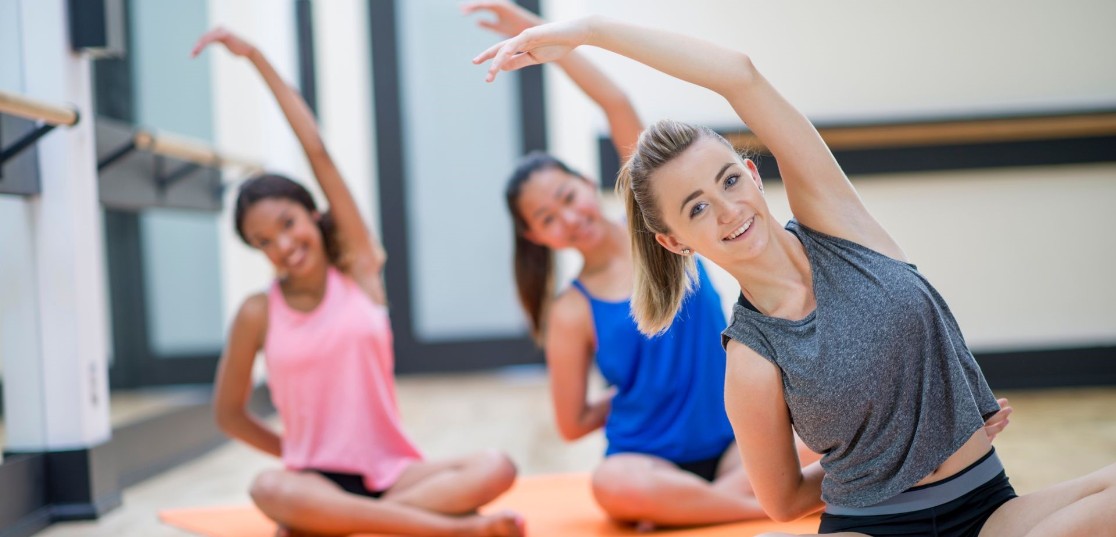How are your core muscles structured?
When we hear the term core or core strength, images of a six pack or a chiseled mid-section may come to mind. One may envision a person doing crunches, planks or in a seemingly unattainable yoga pose. Others may have resolved that having a strong core is not possible. But what if I told you your core muscles involve more than your abs and that strengthening your core does not have to begin with doing crunches? Let's begin by defining what muscles make up our core.
The human core (your torso or trunk) can be viewed as a canister/cylinder. The top of the canister is the diaphragm muscle (dome-shaped). This muscle sits just below your lungs and is the primary muscle of breathing (respiration). The bottom of your core canister is composed of the pelvic floor muscles (hammock-shaped). Their role is to support the pelvic organs and intra-abdominal contents. The pelvic floor contributes to the control of bowels, bladder and gas, as well as to sexual functions and mobility. As you breathe in and out, the diaphragm and the pelvic floor muscles move up and down.
The sides of your core canister have an outer and inner layer. The outer layer involves the rectus abdominis (six-pack muscle in front), internal and external obliques (side muscles) and rector spinae (back muscles). The inner layer involves the transverse abdominis (TA) and multifidus. The (TA) runs horizontally around your midsection like a corset. The multifidus is a small group of muscles that run along the spine. Together all the muscles of the core work dynamically to provide stability, support and movement.
What are the important functions of your core?
Core development begins in infancy. A newborn baby is very floppy. They have little to no control of their head, limbs, trunk or bowels/bladder. However, over time they develop core strength, head control, the ability to move their limbs and interact with their environment. As we continue to age, we learn how to make coordinated and balanced movements like walking, running, jumping, skipping and dancing. It is important to continue to maintain core strength over a lifetime, especially as we age.
The core acts as a natural "brace" for your spine. A strong core helps maintain the spine's natural curves, promoting an upright, aligned and efficient posture. Good posture supports optimal respiratory function. Take a moment now to sit upright and take a deep long breath. Now slouch forward and try to take a deep breath. Do you feel the difference? Your posture impacts your ability to effectively breathe and engage your core muscles. When the core muscles activate properly, they provide a stable base, protecting your vertebrae and discs from excessive strain during lifting, twisting, jumping, or even just sitting. Overall, improving your balance and coordination with daily activities.
Another important role of the core is injury prevention, particularly for the lower back. A strong core reduces the risk of strains, sprains, and other musculoskeletal issues as well as low back pain. Strengthening, lengthening and re-educating the core muscles can significantly alleviate or prevent this common issue.
How can you stregthen your core?
A strong and functional core is fundamental for almost every movement you make and is essential for overall health and well-being. Strengthening your core does not have to involve crunches, planks or hours in the gym. The three foundations of a strong core involve good posture, proper breath work and effective functional movement. Good posture applies to how you align yourself when stationary (static) and when moving (dynamic). Even though there is perfect posture the general rule is to keep your head neutral, shoulders relaxed and aligned with your hips and your legs hips width apart. Now pause and take a moment to example your current posture.
Good Posture & Diaphragmatic Breathing
Good posture is the foundation for proper breathing and body mechanics. Diaphragmatic breathing is a simple technique that you can integrate into your daily routine. Begin with good upright posture, then inhale through your nose, allowing your belly to rise, hold and then exhale through your mouth, gently drawing your navel towards your spine. Avoid shallow chest breathing. This can be performed lying, sitting, standing and when performing daily tasks. Incorporating diaphragmatic breathing into your daily tasks is a great way to relax and bring awareness to your core and posture.
Combining good posture and proper breath work as you move can make performing daily tasks and exercises easier. For example, when doing a squat or picking an item up from the floor. Inhale as you go down into a squat position and exhale as you come up. It can seem natural to hold your breath when performing strenuous activity. However, in order to prevent straining or bearing down, it is best to avoid holding your breath and instead exhale upon exertion. When exercising, performing one well-executed repetition is more beneficial than ten sloppy ones.
Pelvic Health Physical Therapy
Another way to improve your core strength is by working with a Pelvic Health Physical Therapist. One may associate the need for PHPT with diagnoses such as urinary incontinence (bladder leakage), pelvic pain or sexual dysfunction. However, If you have a weak core, low back pain, pelvic floor dysfunction or are having or recovering from back or abdominal surgery, then working with a Pelvic Health Physical Therapist is important. Therapists can evaluate postural alignment, core stability, breathing mechanics and pelvic floor muscle function. They can educate patients about the potential impact of surgery on the core and pelvic floor and the importance of post-operative rehabilitation. They can address postural imbalances, teach proper breathing techniques and core activation strategies. Additionally they can provide guidance on safe lifting techniques, proper toileting habits, and activity modifications to minimize stress on the abdominal wall, back and pelvic floor. Overall, focusing on restoring optimal muscle function, addressing both weakness and overactivity.
If you'd like more information or need additional tretment for core stregthening, reach out to our pelvic health center team.





